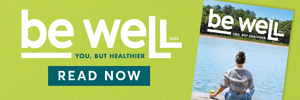Q. Does massage do anything besides make you feel relaxed?
Massage therapy, or simply massage, was first employed thousands of years ago. Ancient writings include references to massage in Greece, Japan, China, Egypt, and the Indian subcontinent.
Massage first became popular in the United States during the 19th century. In the middle of the 20th century, advances in medicine overshadowed massage treatment. Then, massage started a revival in the 1970s.
There are more than 80 kinds of massage that manipulate soft tissue. The purpose of massage is to relax the tissue, increase the flow of blood and oxygen, and decrease pain.
The following are some common types of massage therapy:
Shiatsu massage: The therapist applies varying, rhythmic pressure from the fingers on parts of the body that are believed to be important for the flow of a vital energy called qi.
Deep tissue massage: This form of therapy employs patterns of strokes and deep finger pressure on parts of the body where muscles are tight.
Swedish massage: The therapist uses long strokes, kneading, and friction on the muscles. Joints are moved to increase flexibility.
Trigger point massage: This is also known as pressure point massage. The therapist applies deep, focused pressure on knots that can form in the muscles and cause symptoms in other parts of the body.
Massage has been found to be effective for patients with these conditions: low back pain, cancer, heart bypass surgery, anxiety, migraines, carpal tunnel syndrome and high blood pressure.
Researchers at Ohio State University tested the benefits of massage. Here are some findings:
• Within days, muscles massaged after exercise recovered about 60 percent of their strength. This result compared to recovery of about 14 percent of strength in muscles that were simply rested.
• Muscles massaged after exercise had fewer damaged fibers and almost no sign of white blood cells, compared to rested muscles. The absence of white blood cells indicates that the body did not have to work to repair muscle damage after exercise.
• The massaged muscles weighed about 8 percent less than the rested muscles, indicating a reduction in swelling.
The American Massage Therapy Association has a national service to locate qualified therapists near you. Access this service by going to the online locator at www.amtamassage.org/findamassage/locator.aspx.
The following are some tips from AMTA to get the most out of a massage:
• Don't eat just before a massage.
• Be on time. If you arrive in a rushed state, it may take longer to relax.
• Take off only as much clothing as you are comfortable removing. Make sure the clothing you leave on will allow the therapist to massage you.
• If you are allergic to any oils, lotions or powders, tell your massage therapist, who can use a substitute.
• During the massage, report any discomfort.
• Relax your muscles and your mind during the massage.
• Breathe normally to help you relax.
• If you're dizzy or light-headed after the massage, do not get off the table too fast.
• Drink extra water after your massage.
























































